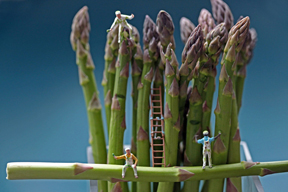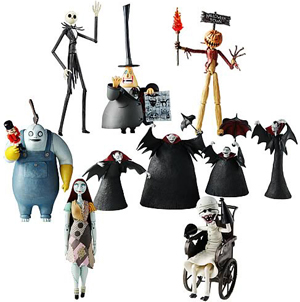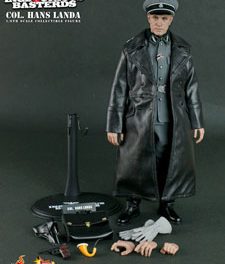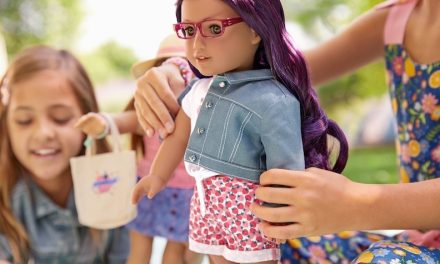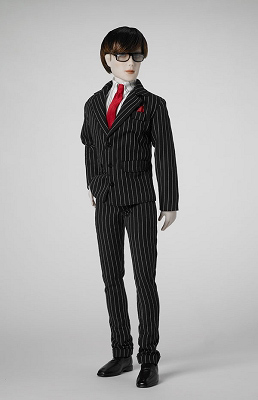This weekend was a cause for celebration in my household. Saturday, May 5, was a once-a-year outpouring of love, lettering, and loot: it was Free Comic Book Day, aka “FCBD.” As the name suggests, if you visited a participating comic book store, you were given a free comic book. Having two children who are partial to reading—coupled with striking art panels—and a husband and myself, who are admitted geeks/nerds/fans (we actually played Dungeon & Dragons in our youth, and beyond), FCBD was marked on my household calendar. We were definitely going to hit up one store, maybe two, or if the greed became uncontrollable, we’d drop in on three. (The greed did spin feverishly, and we did go to three stores, met the nicest people, took business cards, and pledged to return as paying customers. I’m a former Girl Scout—my word is my bond.)
So, while we were in the store, receiving our freebies—some allowed us to choose; others just handed over a predetermined title—the kids explored every nook and cranny. In addition to the tons of comics on hand, there were also loads of dolls, action figures, models, and other 3-D versions of fabled characters.
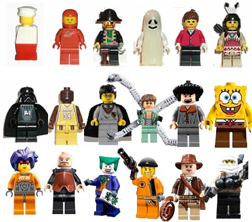 In a bin, we discovered a jackpot of Tim Burton’s “Nightmare Before Christmas” characters. The Henry Selick-directed movie ranks among one of my favorites, and scattered in a bin were a bunch of the flick’s leading players. Because they had been removed from their blister packs and cartons, they were tagged just a step above garage-sale prices. In fact, as we dug through these discarded pop-culture plastic people, we came across a Millennium Falcon’s worth of “Star Wars” figures. Han Solo and his Wookie were forlornly tossed in there, and bore stickers saying “$1.99 each.” That was an amazing discovery, and my kids were happier than a Jedi who just trounced a Storm Trooper without raising a light saber.
In a bin, we discovered a jackpot of Tim Burton’s “Nightmare Before Christmas” characters. The Henry Selick-directed movie ranks among one of my favorites, and scattered in a bin were a bunch of the flick’s leading players. Because they had been removed from their blister packs and cartons, they were tagged just a step above garage-sale prices. In fact, as we dug through these discarded pop-culture plastic people, we came across a Millennium Falcon’s worth of “Star Wars” figures. Han Solo and his Wookie were forlornly tossed in there, and bore stickers saying “$1.99 each.” That was an amazing discovery, and my kids were happier than a Jedi who just trounced a Storm Trooper without raising a light saber.
As they were burrowing amid the tiny heroes and little villains, my son, Tommy, asked me, “What can we do with these toys? They’re so small that they don’t look very scary. How can they battle any of the larger dolls?”
I answered how he shouldn’t be so judgmental. There is mighty power to be found in the smallest of receptacles. Plus, he could definitely engage any of these characters against his Lego people. That might be a “fair” fight.
“And we can make a movie starring them,” chimed in my daughter, Jane. Last year, the two of them shot a “Harry Potter” home movie starring Lego pieces, which was a valiant first effort. I was proud that they were planning to become miniature Steven Spielbergs again!
“Can we make money making these Lego movies?” Tommy asked. “Can we sell them to people or charge people to watch them? And then we can buy more figures for more movies.” (Good to hear that he is a budding entrepreneur who understands the value of reseeding his business.)
“I imagine if you get good enough, you can,” I answered. In fact, I told them, there are tons of different ways to be creative with abandoned action artifacts.
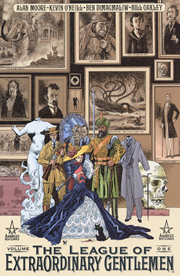

One of the big comic-book series that was a hit in my home was Alan Moore’s “The League of Extraordinary Gentlemen.” (This was a re-imagining of some of Victorian literature’s greatest protagonists and scoundrels: Mina Harker, Allan Quartermain, Captain Nemo, Dorian Gray, Jekyll & Hyde, to name a few.) The graphic novel was translated into a film, but it didn’t really achieve the success that its producers had desired, so the attendant merchandising was never in demand. Still, the comic book has such a devoted cult following that a cottage industry has sprung up to create customized “Extraordinary Gentlemen” collectibles. I told Jane and Tommy that maybe they can become the next Joshua Izzo, dismantling a torso from one figure, adding the wigging from another, painting and sandpapering, chipping away until he has assembled the League in all their glory. If they followed his lead, they could hand-make a cast of thousands for whatever project they envisioned.
“That sounds like too much work,” they both groused. (So much for the entrepreneurial spirit!)
“Well, you could use what you currently have, and shoot them in interesting, odd ways. There are photographers who do that, and they are very successful!” I encouraged.
That piqued their interest—they both have child-friendly cameras, indestructible when dropped and able to withstand jelly streaks on the lens.
I had recently learned about the works of two photographers who specialize in miniature figures—the kind normally found in model railroad environs. Both prove how toys that are often exiled to boxes in the basement or tables at flea markets can have a real important second life as artist muses.
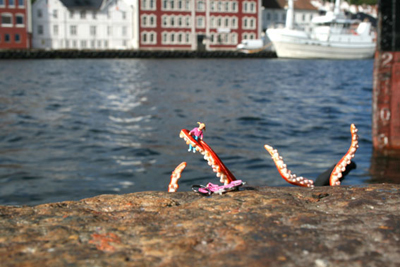 For Slinkachu, a London-based artist, he brings his mini models to the streets of his hometown and sets them up as ordinary English citizens. For his “Little People in the City” project, he shoots them from angles that force perspective in very clever ways. And here’s the surprising twist. After he successfully gets the shot he’s looking for, he abandons his figures, along with their props, for unsuspecting pedestrians to stumble upon. That sounds pretty cool to me! Imagine the excitement, on your way to work, of coming across one of his finger-size cuddling lovebirds or preteen in peril. (She’s being ferociously abducted by an octopus tentacle.) That would be a rare and wondrous day for sure!
For Slinkachu, a London-based artist, he brings his mini models to the streets of his hometown and sets them up as ordinary English citizens. For his “Little People in the City” project, he shoots them from angles that force perspective in very clever ways. And here’s the surprising twist. After he successfully gets the shot he’s looking for, he abandons his figures, along with their props, for unsuspecting pedestrians to stumble upon. That sounds pretty cool to me! Imagine the excitement, on your way to work, of coming across one of his finger-size cuddling lovebirds or preteen in peril. (She’s being ferociously abducted by an octopus tentacle.) That would be a rare and wondrous day for sure!
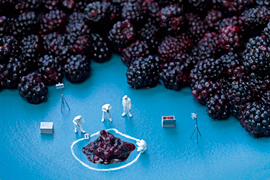 Another photographer who is gaining enormous respect for his ingenuity is Seattle, Washington’s Christopher Boffoli. In his series of photographs entitled “Disparity,” he pairs toys and food. In his meditation on America’s “overconsumption,” he might position a lone tiny toy atop a cupcake, trying to hit a golf ball hidden amid the frosting; a group of cyclists pedal cheerfully across bananas; a CSI forensic team analyzes a blackberry-ridden crime scene, or a work crew takes a break from their asparagus refurbishing. These photos, plus his dozens and dozens of others, take the concept of work and worth in America and give us “food for thought.”
Another photographer who is gaining enormous respect for his ingenuity is Seattle, Washington’s Christopher Boffoli. In his series of photographs entitled “Disparity,” he pairs toys and food. In his meditation on America’s “overconsumption,” he might position a lone tiny toy atop a cupcake, trying to hit a golf ball hidden amid the frosting; a group of cyclists pedal cheerfully across bananas; a CSI forensic team analyzes a blackberry-ridden crime scene, or a work crew takes a break from their asparagus refurbishing. These photos, plus his dozens and dozens of others, take the concept of work and worth in America and give us “food for thought.”
